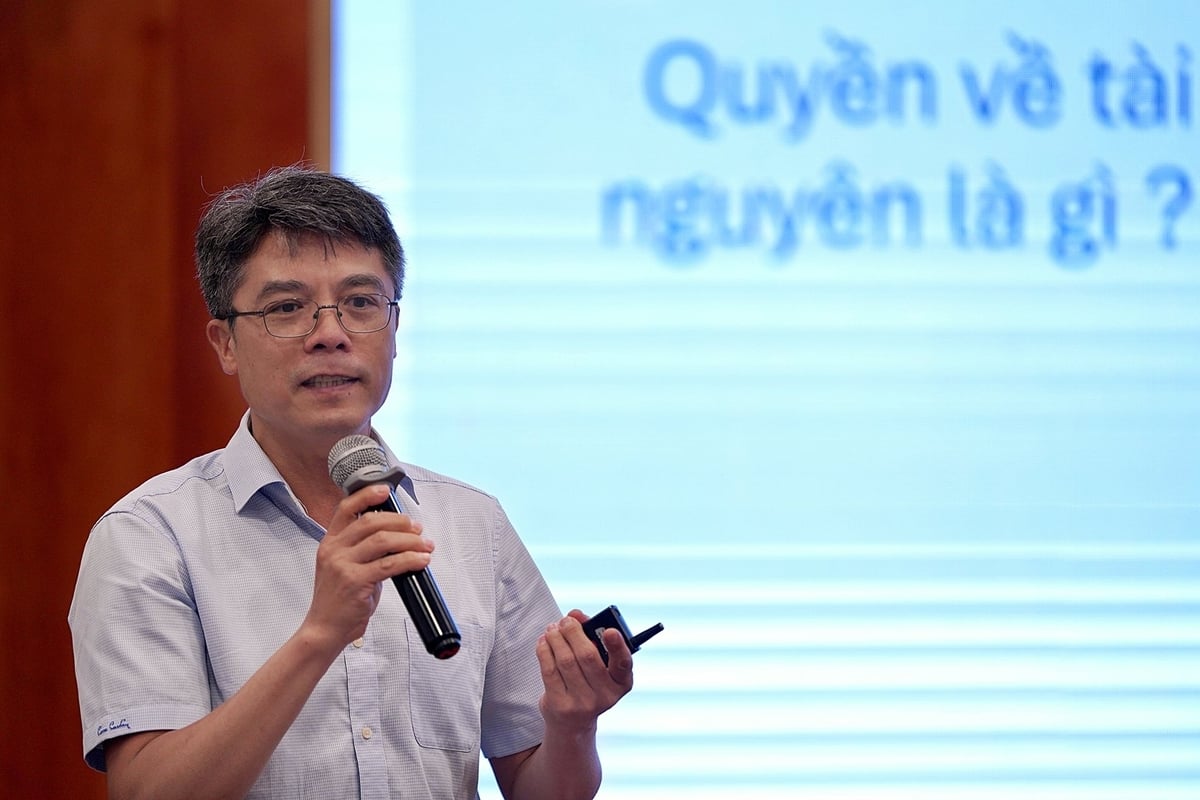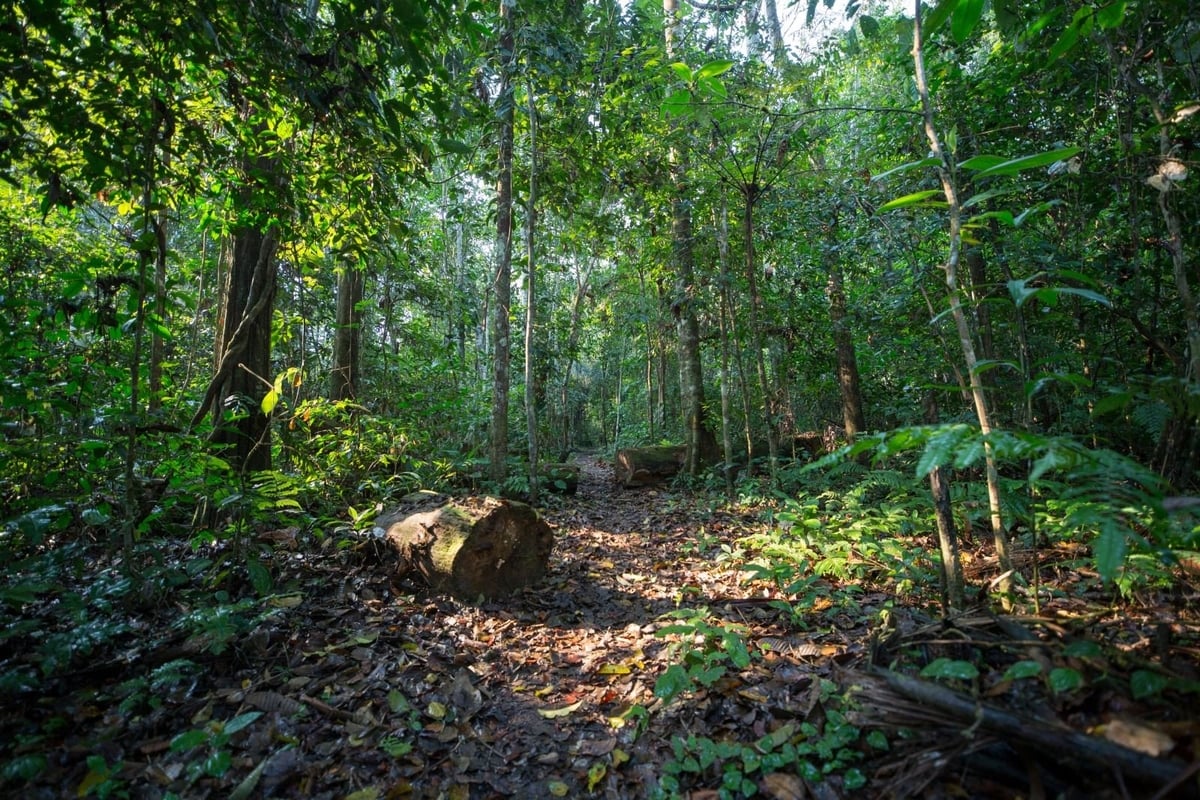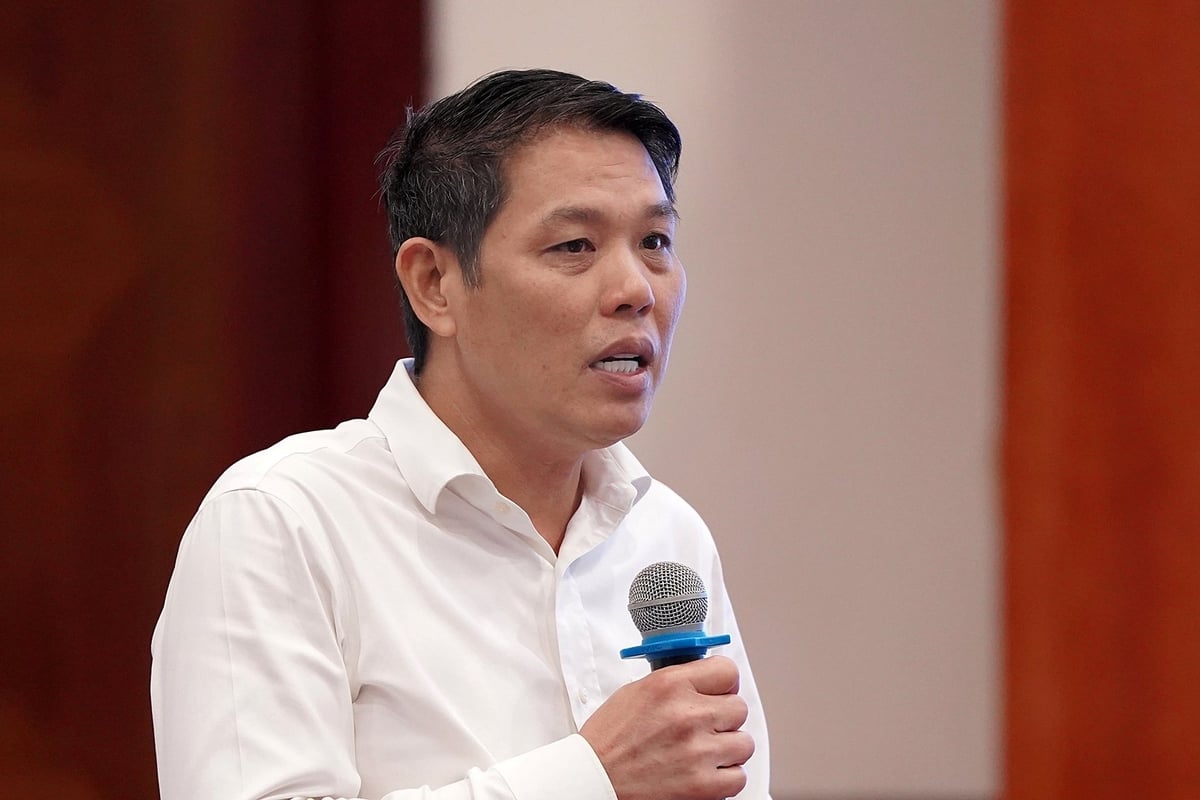December 16, 2025 | 20:54 GMT +7
December 16, 2025 | 20:54 GMT +7
Hotline: 0913.378.918
December 16, 2025 | 20:54 GMT +7
Hotline: 0913.378.918
Forest carbon rights are considered a strategic asset in the global push for a green transition, opening up new export opportunities for many countries. However, in Vietnam, the identification and clarification of carbon rights remain a legal gap.
According to Mr. To Xuan Phuc, senior expert at Forest Trends, carbon rights can be viewed from two perspectives: as an asset associated with land and forests, or as an ecological service created through activities that increase carbon absorption and storage.

Mr. To Xuan Phuc focuses on the issue of who holds the rights to forest carbon. Photo: Bao Thang.
In the first approach, carbon rights belong to the land or biomass owner, which may be the state, community, or private individuals. This method is common in countries with centralized land ownership systems.
In the second approach, carbon rights are tied to activities that generate carbon credits, such as afforestation, habitat restoration, or changing cultivation practices. Those who manage these activities, even without land ownership, can become the holders of carbon rights.
International experience shows there is no one-size-fits-all model, but the key point is to clearly define ownership and control over carbon, especially in the context of international credit trading.
In Chile, carbon rights are directly linked to landowners, allowing them to implement and trade credits freely. Guatemala and Costa Rica apply flexible models depending on agreements between landowners and investors. Conversely, countries like Congo or Madagascar retain carbon rights at the state level, requiring permits for all activities, which sometimes causes conflicts with local communities.
Peru separates land ownership from carbon service provision, ensuring fair benefit-sharing between the two parties. This lesson is highly relevant for Vietnam in implementing REDD+ projects or international credit transfers.
In reality, the lack of specific regulations regarding carbon rights ownership and benefit-sharing or transfer mechanisms in Vietnam has hindered many international cooperation initiatives. This leads to investor hesitation and missed opportunities in the increasingly dynamic carbon credit market.
To effectively participate in the credit market, Vietnam must clearly define who has the right to conduct emission reduction activities, who holds the credits and has the right to trade them, and what mechanism ensures fair benefit-sharing. Without clarity, conflicts, lawsuits, or market distrust are likely to occur.
The preparation to operate a domestic carbon credit trading platform is a positive signal. However, the prerequisite is a legal framework that flexibly establishes carbon rights, harmonizing national laws with local practices.

Vietnam holds great potential in forest carbon credits. Photo: Vnforest.
The lesson from Mexico, which separates credits created from absorption and avoided emissions, highlights the need for an open mechanism to optimize benefits from different types of credits.
Expert To Xuan Phuc emphasized that to seize the opportunity of becoming a “forest carbon exporting country,” Vietnam must soon complete policies on carbon rights in a direction that encourages multi-stakeholder participation, protects national interests, and promotes private sector and community involvement in market development.
As emission reduction requirements become mandatory conditions in international trade, carbon credits are not only tools for environmental protection but also strategic commercial assets.
After completing the legal framework on carbon rights, Vietnam is taking another crucial step to standardize the forest carbon credit system, paving the way for domestic and international transactions.
According to Mr. Vu Tan Phuong, Director of the Office for Sustainable Forest Management Certification, a draft of the national standard (TCVN) on forest carbon credits is being developed with a specific roadmap, expected to be issued in early 2026.
Clarifying the definition of carbon credits is the first step to establishing a transparent and feasible operating mechanism. Accordingly, forest carbon credits are tradable units representing the right to emit one ton of CO2 equivalent.
To generate such credits, projects must demonstrate a reduction in greenhouse gas emissions or an increase in carbon absorption compared to a reference level, while also complying with measurement, monitoring, and independent verification processes.
The draft defines and sets technical requirements for forest carbon credits, including eligibility conditions, intervention measures, emission and absorption measurement and reporting, environmental and social safeguards, assessment and verification processes, and dispute resolution mechanisms.
The draft currently focuses on five main types of projects: REDD+, afforestation and reforestation, improved management of natural forests, plantation forests, and agroforestry. Each type is designed with a long-term crediting cycle (minimum of 10 years) to ensure stability and additionality.
The standard also provides detailed technical requirements for forest loss control, the use of native species, site management, biodiversity conservation, and low-impact harvesting. Projects must develop emission factors following IPCC guidelines, use scientific calculation tools, and implement control processes to ensure quality.
Beyond technical aspects, the standard emphasizes social responsibility and environmental protection: projects must not adversely affect communities, must ensure workers' rights, and must facilitate stakeholder participation.

Mr. Vu Tan Phuong: There are five main types of projects that generate forest carbon credits. Photo: Bao Thang.
Notably, for credits to be successfully traded on international markets, all assessment and verification processes must be conducted by independent organizations accredited to ISO 14065 and recognized by international bodies such as IAF. Assessment entities must be legally licensed in Vietnam and perform verifications with transparent documentation.
A dispute and grievance resolution mechanism is also integrated, with specific regulations on receiving addresses, processing times, mediation prioritization, and record keeping throughout project implementation.
For forest carbon credits to truly become a high-value “green asset”, many issues still need to be addressed from both policy and market perspectives. According to Ms. Nghiem Phuong Thuy, representative of the Vietnam Administration of Forestry and Forest Protection and a member of the drafting committee for the Decree on forest carbon absorption and storage services, various concepts such as carbon tax, carbon quota, or carbon credit currently exist. Although all are converted into one ton of CO₂ equivalent, their differing natures lead to confusion during implementation, especially at the local level.
The current price of carbon credits from REDD+ projects is very low, while the cost of generating credits remains high. Transactions in North Central Vietnam once reached only about USD 5 per credit, causing forest owners to hesitate in participating without mechanisms to ensure their benefits.
The Ministry of Agriculture and Environment is considering two pricing methods: market-based for easier management, or cost-based to ensure supplier rights. Regardless of the approach, the biggest bottleneck remains a lack of investment capital. Creating credits from carbon absorption is a long-term process that cannot proceed without the role of businesses. Without private sector engagement, projects will struggle to materialize.
With the standard system being completed and clearer policy directions, Vietnam is gradually establishing a legal and technical foundation for the “forest carbon industry”, a sector that promises not only emission reduction but also opens opportunities to export a new, sustainably valuable environmental resource.
Translated by Huong Giang

(VAN) Trading forest carbon credits is to reduce greenhouse gas emissions while creating sustainable livelihoods for local communities.

(VAN) Expanding the area of forests with FSC certification creates a foundation for elevating the economic value of forests, promoting sustainable management, and offering opportunities to participate in the carbon credit market.

(VAN) MAE and GIZ organized the conference to strengthening capacity and readiness for EUDR implementation in Vietnam.

(VAN) When women, men, children, and people with disabilities all have the opportunity to maximize their potential, the economy will grow, and the country will prosper.

(VAN) Effective disaster prevention and the creation of sustainable livelihoods through practical forestry policies are the distinct and crucial values of special-use and protection forests.

(VAN) The policy movement regarding carbon emission reduction is opening up a new approach, linking national goals with practical agricultural production.

(VAN) Deputy Prime Minister Tran Hong Ha made this request at the 24th meeting of the National Steering Committee for Combating IUU Fishing with 21 coastal provinces and cities joining virtually.